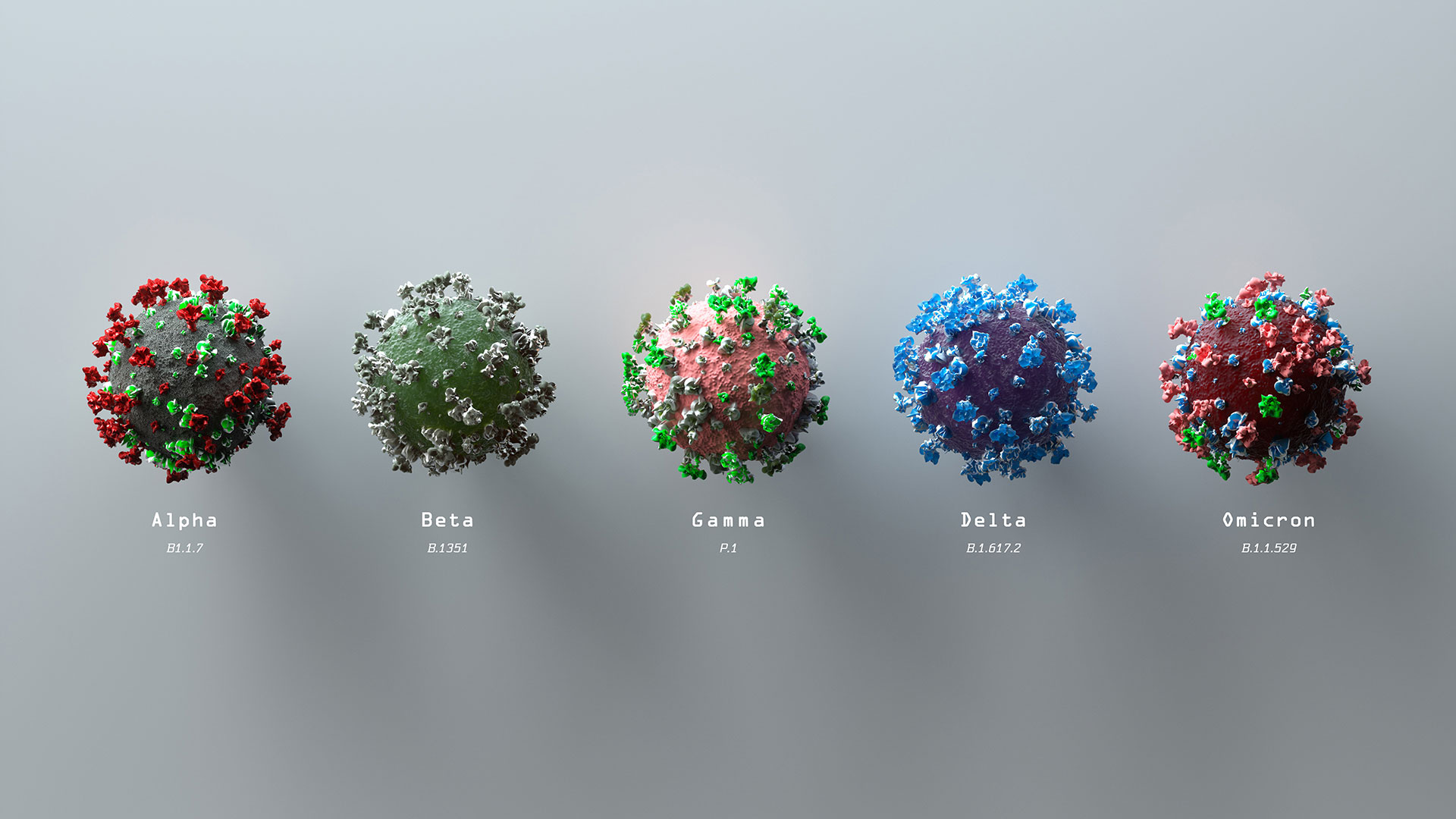
The increase in COVID-19 cases caused worldwide by the Ómicron variant of SARS-CoV-2 is decreasing, but researchers are keeping an eye on the highly transmissible subvariant known as BA.2.
And while the experts' consensus agrees that it does not seem to have the capacity to drive a large new wave of infections, the variant could potentially slow down the current decline in cases and make treatment more difficult.
In fact, as many countries relax their prevention measures against the disease based on the decline in cases, many believe that this can make it easier for BA.2 to drive a further increase in infections. A March 10 report by British researchers suggests that this may be happening in areas where a rise in new infections is beginning to be reported.
Simultaneously, records from several European countries and China show that infections of COVID-19 escalated again to become a new wave of concern to health authorities.

The Ómicron variant and its BA-2 subvariant are responsible for mass contagion. For example, between March 2 and 10, daily coronavirus infections in Germany rose by 19%, in Italy by 17.7% and in Austria by 25.3%. The numbers have grown so much in Germany that they motivated that the country's Minister of Health, Karl Lauterbach, to openly describe the situation as “critical”.
The Ómicron variant was discovered in November, and it quickly became clear that the viral lineage already existed as three genetically distinct varieties. Each branch of Omicron had its own set of unique mutations. At that time, the most common was BA.1, which spread rapidly around the world. BA.1 was almost entirely responsible for the record increase in cases this winter.
And while BA.1 was initially a thousand times more common than BA.2, since the beginning of 2022, BA.2 began to be found in a greater proportion of new infections, according to The New York Times.

What is known so far
All versions of Ómicron are highly contagious, so the variant quickly displaced previous forms of the coronavirus, such as Delta. But several studies found that BA.2 is even more transmissible than BA.1.
In Denmark, for example, scientists examined the spread of both subvariants in households, and found that people infected with BA.2 were much more likely to infect people with whom they shared a house than those with BA.1. In England, researchers found that, on average, it took less time for someone with BA.2 to infect another person, which accelerated its spread in communities.
By the beginning of 2022, BA.2 was becoming more common in several countries. By February, it had become dominant worldwide, displacing the once-dominant BA.1. In the United States, the Centers for Disease Control and Prevention (CDC) estimated that BA.2 jumped to 11% in early March from 1% in early February, indicating that it could soon become dominant in this country as well.
But that doesn't mean that Americans are at risk of a new wave of BA.2 that is infecting a lot of new people. As BA.2 became more common in the United States, the total number of new cases fell by approximately 95%. Worldwide, the number of new daily cases had dropped by half what it was at its peak at the end of January.
But there are a number of reasons why epidemiologists doubt that BA.2 will drive a new massive increase in infections globally.

Here are some key points to understanding BA.2 and what is known so far:
- It would be easier to get infected with her
All types of Omicron are highly contagious, which is why it quickly displaced earlier variants such as Delta and caused an immense increase in broadcasts around the world. But preliminary studies suggest that BA.2 is even more transmissible than BA.1. This has already become the dominant form of omicron in some countries and is gaining ground in others. Its potentially higher transmissibility has raised some concerns that BA.2 could cause a new peak or could lengthen the current one, but it is not yet known whether that is likely to happen.
- It would not generate more serious pictures
A crucial feature of the increase in Ómicron has been that, if you are infected with the variant, your chances of becoming seriously ill, being hospitalized or dying are much lower than with the delta variant or the previous ones. Research so far, including a new study from South Africa, indicates that BA.2 is no different from BA.1 in that regard.
- Existing vaccines work against you
While Ómicron is generally known to have been slightly more effective than other variants in causing infections in newly vaccinated people, vaccines still provide substantial protection against infection and very strong protection against serious diseases. Booster doses make protection even more robust. And once again, BA.2 doesn't seem to change any of that: British researchers recently discovered that vaccines were equally effective against both omicron subvariants.
The Omicron variant has also crossed, much better than other variants, the natural immunity acquired from previous infections, and some concerns have been raised that BA.2 could do that to people who contracted BA.1 in the Omicron wave. While such reinfections have been reported, so far they have been extremely rare even in countries where BA.2 is now prevalent.
KEEP READING
Últimas Noticias
Debanhi Escobar: they secured the motel where she was found lifeless in a cistern
Members of the Specialized Prosecutor's Office in Nuevo León secured the Nueva Castilla Motel as part of the investigations into the case

The oldest person in the world died at the age of 119
Kane Tanaka lived in Japan. She was born six months earlier than George Orwell, the same year that the Wright brothers first flew, and Marie Curie became the first woman to win a Nobel Prize

Macabre find in CDMX: they left a body bagged and tied in a taxi
The body was left in the back seats of the car. It was covered with black bags and tied with industrial tape
The eagles of America will face Manchester City in a duel of legends. Here are the details
The top Mexican football champion will play a match with Pep Guardiola's squad in the Lone Star Cup

Why is it good to bring dogs out to know the world when they are puppies
A so-called protection against the spread of diseases threatens the integral development of dogs




